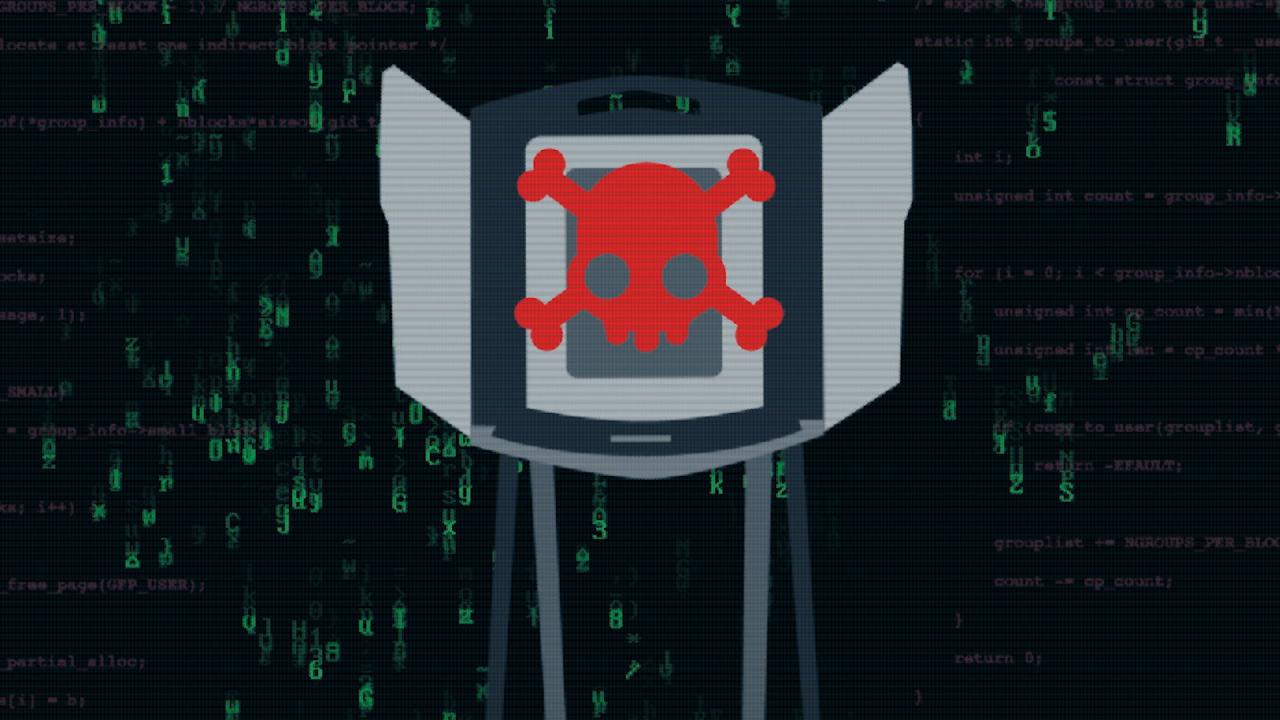
Election Hack Is Possible, Says Germany
Election hack is possible says germany – Election hack is possible, says Germany – a chilling statement that throws a stark light on the vulnerabilities of modern democratic processes. Germany’s warning isn’t just a hypothetical threat; it’s a reflection of growing concerns about state-sponsored cyberattacks and the potential for widespread election manipulation. This isn’t a new problem, but the recent warning underscores the urgent need for increased security measures and international cooperation to protect the integrity of future elections worldwide.
We’ll delve into the specifics of Germany’s announcement, explore the technical methods used in election hacking, and examine the potential actors and their motivations. We’ll also look at ways to strengthen defenses and foster a more secure global electoral landscape.
The geopolitical landscape is increasingly fraught with tension, making election interference a real and present danger. Germany’s statement follows a series of similar warnings from other nations, highlighting a pattern of escalating cyber warfare tactics aimed at undermining democratic processes. Understanding the techniques used in these attacks, the vulnerabilities of various voting systems, and the resources required to carry them out is crucial to developing effective countermeasures.
We’ll examine real-world examples, explore hypothetical scenarios, and discuss the critical role of international collaboration in safeguarding the integrity of our elections.
Germany’s Warning
Germany’s recent statement regarding the possibility of election hacking, while acknowledging preparedness and existing countermeasures, carries significant weight within the current geopolitical climate. The statement isn’t simply a technical assessment; it’s a reflection of growing concerns about state-sponsored cyber warfare and the vulnerability of democratic processes to digital manipulation.
The Geopolitical Context
The statement arrives amidst heightened tensions between Russia and the West, fueled by the ongoing war in Ukraine. Russia’s history of alleged interference in foreign elections, including the 2016 US presidential election and various European elections, casts a long shadow. Furthermore, the increasing sophistication of cyberattacks and the proliferation of disinformation campaigns contribute to a climate of uncertainty and apprehension.
Germany, as a major European power and a key member of NATO, is acutely aware of its vulnerability to such threats, particularly given its reliance on digital infrastructure and its proximity to potential aggressors.
Specific Events and Intelligence
While the specifics of the intelligence leading to Germany’s public warning remain classified, it’s reasonable to assume that the assessment is based on a confluence of factors. These likely include ongoing monitoring of Russian cyber activity, analysis of past attempts at election interference, and intelligence sharing with allied nations. The recent increase in cyberattacks targeting critical infrastructure across Europe might also have contributed to this heightened sense of alert.
The warning serves as a proactive measure to bolster public awareness and preparedness, rather than a response to a specific, imminent threat.
Timeline of Warnings and Incidents
The German warning is not an isolated incident. A series of similar warnings and documented incidents highlight a persistent global threat to electoral integrity.
| Country | Date | Statement | Key Details |
|---|---|---|---|
| United States | 2016-2020 | Multiple warnings of Russian interference in US elections. | Investigations by US intelligence agencies revealed attempts to influence the outcome of elections through hacking, disinformation campaigns, and social media manipulation. |
| United Kingdom | 2019 | Warnings of foreign interference attempts targeting the UK general election. | Investigations focused on disinformation campaigns and attempts to sow discord through online platforms. |
| France | 2017 | Reports of cyberattacks targeting the French presidential election. | Attempts to compromise electoral systems and spread disinformation were identified and countered. |
| Germany | [Insert Recent Date of German Warning] | Public warning regarding the possibility of election hacking. | The statement emphasizes preparedness and existing countermeasures while acknowledging the ongoing threat. |
Comparison to Previous Warnings
The German statement, while acknowledging existing countermeasures, shares similarities with previous warnings from other nations in its emphasis on the persistent threat of election interference and the need for vigilance. The difference lies primarily in the level of detail released publicly; some nations have opted for more opaque warnings to avoid revealing sensitive intelligence. The shared concern, however, underscores the transnational nature of this threat and the need for international cooperation in addressing it.
Methods of Election Hacking
The increasing reliance on digital systems in elections presents a significant vulnerability to malicious actors. Election hacking, encompassing a range of techniques, aims to manipulate the outcome of an election, undermining democratic processes. Understanding these methods is crucial for developing effective countermeasures and safeguarding the integrity of electoral systems.Election hacking techniques exploit vulnerabilities in various stages of the electoral process, from voter registration to vote counting.
These attacks can range from subtle manipulations affecting individual votes to large-scale disruptions affecting the entire electoral system. The consequences can be severe, eroding public trust and potentially leading to political instability.
Vulnerabilities of Different Voting Systems
Different voting systems exhibit varying degrees of susceptibility to hacking. Older, less secure systems, particularly those lacking robust audit trails and encryption, are particularly vulnerable. For instance, systems relying solely on outdated hardware and software with known security flaws are easily compromised. Direct-recording electronic (DRE) machines, which lack a paper trail for auditing, have been a particular focus of concern, as any manipulation of the software can go undetected.
In contrast, systems that incorporate paper ballots and auditable electronic components offer a higher level of security, providing a means to verify the accuracy of electronic counts. The strength of a voting system’s security often depends on the implementation and maintenance of the system as much as the technology itself. Poorly configured systems, regardless of the underlying technology, can be easily exploited.
Technical Aspects of Election Hacking
Several technical methods are employed in election hacking. One common approach involves exploiting vulnerabilities in the software controlling voting machines. This might involve injecting malicious code to alter vote tallies or disable voting machines entirely. Another technique is manipulating voter registration databases, either adding fraudulent voters or removing legitimate ones. This can be achieved through SQL injection attacks or other database manipulation techniques.
Network attacks targeting election infrastructure, such as denial-of-service attacks (DoS), can disrupt voting processes by overwhelming systems and making them unavailable. Finally, physical access to voting machines remains a significant vulnerability, allowing attackers to tamper with hardware or software directly.
Germany’s warning about the possibility of election hacks really hits home. We need robust security measures, and that’s where understanding the advancements in cloud security becomes crucial. Learning about bitglass and the rise of cloud security posture management is a great starting point, especially considering how vulnerable our systems are. Ultimately, stronger cybersecurity is the only way to truly safeguard our elections from potential interference.
Cyber Warfare and Election Influence, Election hack is possible says germany
Cyber warfare plays an increasingly significant role in influencing elections. State-sponsored actors or other malicious groups can employ sophisticated techniques to interfere with elections, including spreading disinformation, launching cyberattacks, and manipulating social media to sway public opinion. These attacks can be subtle, aiming to undermine trust in the electoral process rather than directly altering vote counts. For example, the release of fabricated documents or hacked emails can be used to discredit candidates or parties.
The use of botnets to amplify disinformation campaigns on social media further amplifies the impact of these attacks.
Hypothetical Scenario: A Successful Election Hack
Imagine a scenario where a malicious actor gains access to the central server managing a state’s election results. Through a sophisticated phishing attack targeting an election official, they obtain login credentials. They then deploy malware to subtly alter vote counts for a key race, adding a small number of votes to their preferred candidate in multiple precincts. The changes are small enough to avoid immediate detection, but collectively, they are sufficient to alter the outcome of the election.
The lack of a robust audit trail, combined with the absence of independent verification mechanisms, prevents the detection of this manipulation, resulting in a fraudulent election outcome. This scenario highlights the importance of robust security measures, regular audits, and independent verification of election results.
Actors and Motivations

Germany’s recent warnings about the possibility of election hacking highlight a critical concern: understanding the actors behind such attempts and their motivations. The potential for interference is real, and analyzing the “who” and “why” is crucial for developing effective countermeasures. This analysis delves into the diverse range of actors and their varying goals, shedding light on the complexities of election security.
Election interference is a multifaceted problem, with actors ranging from nation-states to individual hackers, each driven by distinct objectives. Understanding these motivations is essential for anticipating and mitigating threats. The resources and capabilities needed to successfully compromise an election system vary greatly depending on the target and the actor’s sophistication. The consequences of a successful attack can be equally diverse, ranging from minor disruptions to the complete undermining of democratic processes.
Potential Actors Involved in Election Hacking
The landscape of potential actors involved in election hacking is broad and varied. It’s crucial to understand the differing capabilities and motivations of each group.
- State Actors: Nation-states often engage in election interference to influence the outcome in favor of preferred candidates or parties. This can involve sophisticated cyberattacks, disinformation campaigns, and other forms of interference. Examples include alleged Russian interference in the 2016 US presidential election and accusations of similar activities in other countries. These actors typically possess significant resources, including highly skilled personnel and advanced technologies.
- Non-State Actors: This category encompasses a wide range of actors, including politically motivated groups, extremist organizations, criminal enterprises, and even individual hackers. Their motivations can vary significantly, from promoting a specific political agenda to financial gain or simply causing chaos and disruption. Their resources and capabilities are generally less extensive than those of state actors, but their actions can still be highly damaging.
- Insiders: Individuals with legitimate access to election systems pose a unique threat. These actors may be motivated by political ideology, personal gain, or other factors. Their insider knowledge can make them particularly dangerous, as they can exploit vulnerabilities within the system that are not readily apparent to external attackers. This necessitates robust internal security measures and rigorous vetting processes.
Motivations Behind Election Interference
The motivations driving election interference vary significantly depending on the actor involved. Understanding these motivations is key to predicting and preventing future attacks.
- Political Gain: This is a primary motivator for both state and non-state actors. Influencing the outcome of an election can significantly shift the political landscape and advance the interests of a particular party, ideology, or nation.
- Financial Gain: Criminal actors may target election systems for financial gain, potentially through data breaches, extortion, or the manipulation of financial markets based on election results.
- Destabilization: Some actors may aim to destabilize a country or region by undermining public trust in democratic processes. This can be achieved through the dissemination of disinformation or the disruption of voting systems.
- Ideological Reasons: Extremist groups may seek to advance their ideological goals through election interference, aiming to promote their views and disrupt the existing political order.
Resources and Capabilities Required for a Successful Election Hack
A successful election hack requires a combination of technical expertise, resources, and planning. The specific requirements will vary depending on the target system and the attacker’s goals.
- Technical Expertise: Sophisticated knowledge of computer networks, security protocols, and voting system architecture is essential. This often requires specialized skills in areas like reverse engineering, exploit development, and cryptography.
- Financial Resources: Acquiring and maintaining the necessary tools and infrastructure, such as specialized software, hardware, and potentially even physical access to voting equipment, can be expensive.
- Access to Information: Detailed knowledge of the target system’s vulnerabilities and security protocols is crucial. This might involve intelligence gathering, social engineering, or exploiting insider access.
- Time and Planning: Successful election hacking is rarely a spontaneous act. It typically involves meticulous planning, reconnaissance, and execution over an extended period.
Potential Consequences of Successful Election Interference
The consequences of a successful election hack can be far-reaching and devastating, impacting the legitimacy of the election, public trust, and even national security.
- Undermining Public Trust: A successful attack can erode public confidence in the integrity of the electoral process, leading to widespread distrust and potentially even social unrest.
- Disputed Election Results: Manipulated results can lead to protracted legal battles, political instability, and even violence.
- Foreign Policy Implications: Election interference by a foreign power can severely strain international relations and create geopolitical tensions.
- National Security Risks: Compromised election systems can provide access to sensitive information, potentially exposing national security secrets.
- Economic Instability: Uncertainty surrounding election results can negatively impact financial markets and the overall economy.
Protective Measures and Countermeasures
Protecting elections from hacking requires a multi-layered approach, acknowledging that no single solution guarantees complete security. A robust defense relies on a combination of technical, procedural, and human safeguards, each working in concert to deter, detect, and respond to potential threats. The goal is to create a system resilient enough to withstand various attack vectors and minimize the impact of any successful breach.Existing security measures vary widely depending on the specific election system and jurisdiction.
Many jurisdictions utilize secure hardware, such as tamper-evident voting machines and encrypted ballot transmission systems. Regular security audits and penetration testing are also common, aiming to identify vulnerabilities before they can be exploited. Furthermore, robust access control measures, including strong passwords, multi-factor authentication, and strict authorization protocols, limit unauthorized access to sensitive election data. Finally, comprehensive incident response plans are essential to quickly contain and mitigate any security incidents.
Improving Existing Security Measures
Strengthening election security requires continuous improvement and adaptation. One crucial area is the implementation of more advanced cryptographic techniques to enhance data confidentiality and integrity. This includes the use of homomorphic encryption, which allows computations to be performed on encrypted data without decryption, preserving voter privacy while enabling audits. Another key improvement is the adoption of blockchain technology, which can provide a transparent and immutable record of the election process, making it more difficult to tamper with results.
Finally, investing in robust cybersecurity training for election officials and staff is critical to ensure they are equipped to identify and respond to potential threats.
Successful Countermeasures Against Election Hacking Attempts
Several successful countermeasures have been implemented to thwart election hacking attempts. For example, the use of paper ballots as a verifiable backup, allowing for manual recounts and audits to confirm electronic results, has proven to be a highly effective safeguard. In addition, rigorous post-election audits, including comparing electronic tallies with hand-counted paper ballots, have helped to detect and correct any inconsistencies.
Furthermore, the implementation of intrusion detection systems and security information and event management (SIEM) tools has enabled the timely detection of suspicious activities, allowing for rapid response and mitigation. The proactive identification and patching of software vulnerabilities, a continuous process, is also crucial in preventing exploitation.
A Layered Security Approach to Election Integrity
Imagine a layered security model depicted as a series of concentric circles. The innermost circle represents the physical security of voting machines and ballot storage, including measures like tamper-evident seals, secure transportation, and controlled access to polling places. The next layer encompasses the technical security measures, such as secure network infrastructure, encryption protocols, and access control mechanisms. The third layer focuses on procedural security, including voter registration verification, chain-of-custody protocols for ballots, and transparent audit trails.
Germany’s warning about potential election hacks got me thinking about secure systems. Building robust, reliable applications is crucial, and that’s where learning about the advancements in domino app dev the low code and pro code future becomes really important. Improved application development could help prevent vulnerabilities exploited in election systems, making the whole process more secure from potential attacks.
It’s clear we need better tech to safeguard our democratic processes.
The outermost layer comprises human security elements, such as rigorous staff training, robust incident response plans, and independent audits conducted by trusted third parties. Each layer contributes to the overall security posture, and a breach in one layer should ideally be mitigated by the strength of the others. This layered approach ensures that even if one security measure fails, others remain in place to protect the integrity of the election.
International Cooperation and Response: Election Hack Is Possible Says Germany

The specter of election hacking looms large, transcending national borders and demanding a concerted global response. Preventing interference in democratic processes requires a collaborative effort, leveraging the expertise and resources of nations and international organizations alike. The interconnected nature of the digital world necessitates a shared understanding of threats and a unified approach to mitigation.International cooperation plays a crucial role in bolstering election security by fostering information sharing, developing common standards, and providing mutual assistance.
This collaboration is not merely beneficial; it is essential to counter sophisticated and evolving hacking techniques that often operate across jurisdictions. The effectiveness of national efforts is significantly enhanced when coupled with a robust international framework.
International Organizations’ Efforts
Several international organizations are actively involved in addressing the threat of election hacking. The Organization for Security and Co-operation in Europe (OSCE), for example, provides election observation missions that often include assessments of cybersecurity vulnerabilities. The OSCE’s expertise extends to assisting countries in strengthening their electoral systems and building capacity to counter cyber threats. Similarly, the United Nations, through various agencies, promotes good governance and encourages the adoption of best practices in election management, including cybersecurity measures.
These organizations often facilitate the exchange of information and best practices between countries, helping to identify emerging threats and develop effective countermeasures. The sharing of threat intelligence, vulnerability assessments, and incident response strategies is crucial for preventing widespread attacks.
Comparison of National Approaches
National approaches to election security vary considerably depending on factors such as technological capabilities, political context, and perceived threat levels. Some countries invest heavily in sophisticated cybersecurity infrastructure and personnel, while others rely on less technologically advanced methods. For instance, Estonia, a pioneer in e-voting, has developed robust cybersecurity measures to protect its online voting system. In contrast, other countries may focus primarily on physical security measures at polling stations.
These differences highlight the need for a flexible international framework that accounts for varying national contexts while promoting a common goal of secure and credible elections. The challenge lies in finding a balance between maintaining national sovereignty over electoral processes and ensuring effective international cooperation.
Recommendations for Improving International Collaboration
Effective international collaboration requires a multi-faceted approach. The following recommendations can strengthen global efforts to combat election hacking:
- Establish a global early warning system for election-related cyber threats. This system would facilitate the rapid sharing of information about potential attacks, allowing countries to take preemptive measures.
- Develop and implement common cybersecurity standards for election systems. This would help ensure interoperability and facilitate the sharing of best practices.
- Increase funding for international initiatives aimed at improving election security. This funding could be used to support capacity building in developing countries and to develop new technologies to counter cyber threats.
- Promote the sharing of best practices and lessons learned from past election hacking incidents. This would allow countries to learn from each other’s experiences and avoid repeating past mistakes.
- Foster greater collaboration between governments, private sector companies, and civil society organizations. This multi-stakeholder approach is crucial for developing comprehensive and effective solutions.
- Create a dedicated international task force to coordinate the global response to election hacking. This task force could be responsible for coordinating investigations, sharing intelligence, and developing countermeasures.
Outcome Summary

Germany’s stark warning about the possibility of election hacking serves as a crucial wake-up call. The threat is real, the methods are sophisticated, and the consequences are potentially devastating. While existing security measures offer some protection, strengthening these defenses and fostering greater international cooperation are paramount. By understanding the technical aspects of election hacking, identifying potential actors, and implementing robust countermeasures, we can strive towards a future where the integrity of our elections is better protected.
The fight for secure elections is a continuous battle, requiring constant vigilance, adaptation, and a unified global effort.
Question Bank
What specific evidence led Germany to issue this warning?
The exact evidence remains undisclosed for security reasons, but it likely involves intelligence gathered regarding foreign actors’ capabilities and intentions.
Are paper ballots completely safe from hacking?
While paper ballots are more secure than electronic systems, they are still vulnerable to manipulation during the printing, transportation, counting, and storage processes.
What role do social media platforms play in election hacking?
Social media can be used to spread disinformation, influence public opinion, and sow discord, thereby undermining the electoral process.
What can individual citizens do to help protect election integrity?
Stay informed about election security measures, report any suspicious activity, and participate in the democratic process by voting.





